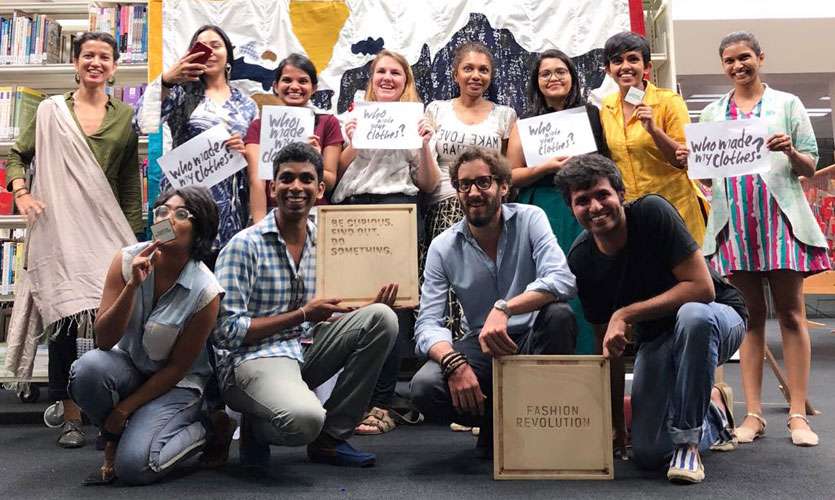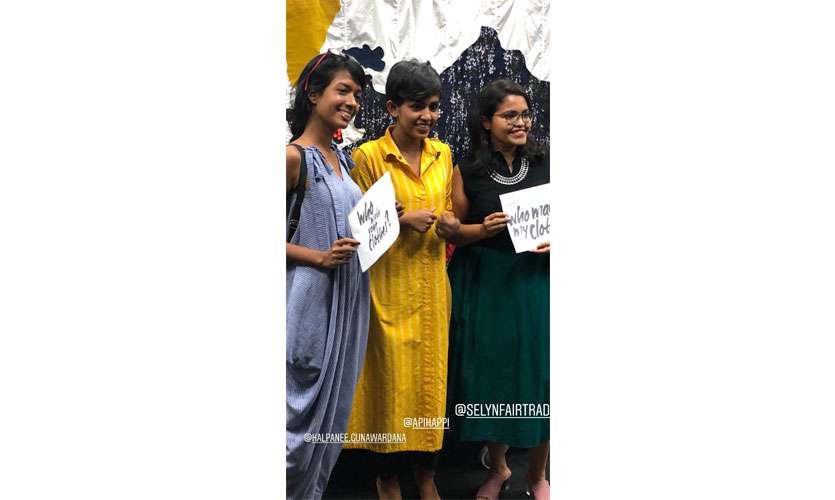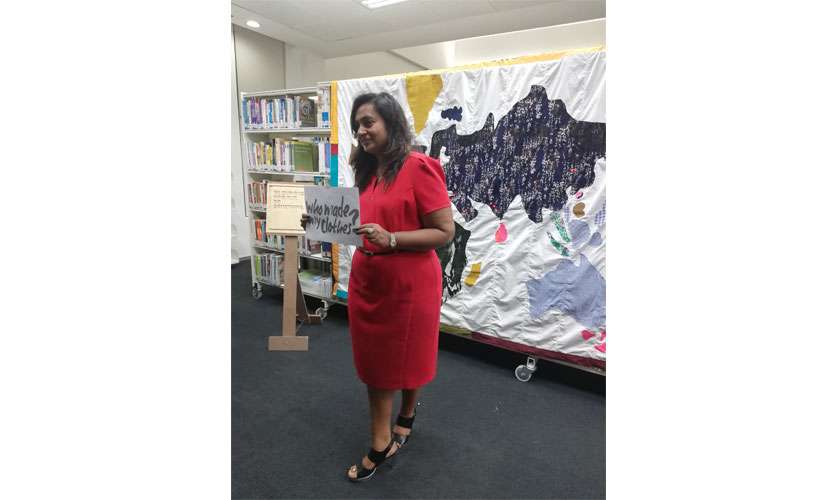Jul 17 2018.
views 383
You are scrolling down your Instagram page leisurely till you stop at a picture posted by big high street fashion brand like Zara, Mango or H&M, they have released a range of new designs and the models look too cool for school donned in the latest trends looking on point,
Thin, beautiful and glamorous all for the low low price of $19.95. but have you ever taken a minute to wonder how are these low costs achieved? Who is really paying the price for this cheap fast fashion we have grown to love?
Fashion Revolution Sri Lanka, represented by several local and ethical fashion brands held a screening of “the true cost” documentary by Andrew Morgan on 14th June at the British Council library. To give you an idea about the film, in a nutshell, we shall we shall let Andrew Morgan summarizes this whole documentary in on simple sentence as he did at the start of it,
“This is a story about clothing, it’s about the clothes we wear, people who make these clothes and the impact it is having on our world.”

Andrew Morgan embarked on the mission to uncover the grisly truth about the world of fashion after the whole world was brought to a standstill in 2013 when the building Rana Plaza collapsed. With no background in fashion but driven to find answers, he peels off each layer of the production line to reveal something out of Dante’s seven hells. The documentary was paid for by participants on the crowdfunding site, Kickstarter. About 900 strangers funded the project which took 2.5 years to make.
The film is a juxtaposition of the products and the effect of the process through interviewing different people from different backgrounds in the fashion industry from designers, organic cotton farmers, factory owners to the very workers stitching your clothes in third world countries. The constant back and forth transition of scenes from the high strung glitzy runway shows, to the dire working conditions of the workers in the factories and the polluted water which is the result of the byproducts of a denim wash plant brings us to a stark reality we can no longer deny.
We are exploiting not only the abundant resources given by mother earth but also taking away the humanity of it all where we meekly try to justifying these horrors by saying “ they chose this” or “their alternatives are a lot worse” all so we can “ buy clothes we don’t need with money for people we don’t like"
The fashion Industry had a pretty good system going on for them. For many years, there were two seasons spring/summer and autumn/winter. Now, this has been buried under a pile of clothes made by a 52-week cycle, and that means a new design is regurgitated almost every week.
The documentary explores how the advertisements keep feeding us the belief that we can only be happy and look pretty and thin only if we buy their clothes we are on a conveyor belt of mass consumerism where we mindlessly buy along the way without even giving it a second thought. We have more cloths than we can even remember but, are we any happier?

Over the course of time, prices of cloths have dropped but not the cost of making them, so big brands look to outsource their products from 3rd world countries where the labor is cheap and kept cheap for this very reason, so they get more orders. The companies pressure the factory owners making the cloths and the factory owners pressure the workers who are at the bottom of this production line and get squeezed from every direction. the cost is cut from the factory workers who not only have to keep up with insane lead times for a dirt-cheap salary of 3$ a day and seeing their loved ones maybe ones a year if they are lucky.

“They are doing a job, there are a lot worse thing that they could be doing, there is nothing intrinsically dangerous about sewing cloths, so we are sort of starting out with a relatively safe industry, it’s not like coal mining, or natural gas mining, that are much more dangerous”
Let’s tell that to all the lives lost during the Rana plaza building collapse in 2013 where 1138 people died another 2500 injured and the high street brand labels lay strewed during the cement rubble and the cries of people buried alive. The most devastating part of this whole incident is that it could have been prevented, people noticed the cracks on the building and refused to go in, but the owners threatened their livelihood saying they will not get their salary if they don’t work that day. It was a tragedy that should have never happened, and it wasn’t the first time, in 2012 Tazreen Fashion factory caught fire which was first speculated to be because of faulty wiring but further investigation arson was suspected an act of sabotage.
The workers might be forced to choose these job as the alternatives maybe be a lot worse for them, but does it really mean we should exploit their lack of choices? Their poverty? Their innocence? It is not possible to justify the atrocities of the environmental issues of the chemicals used in cotton farming that have left villages in Pakistan having to treat their children born with some form of disability or the workers in Cambodia who simply asked for the minimum wage of $160 but were treated like vigilante beaten by the police into submission laid in the streets in a pool of their own blood. We can go on and on with the statistics and numbers and death tolls but at the end of the day these were all people with lives, souls and loved ones and no one should have died in the name of fashion. There must be a better way to go about this.

The documentary pulls back the curtain and give us the raw, uncensored, dirty details of this 3 trillion-dollar industry that is the second largest polluter in the world. Andrew Morgan puts a face to all those Made in Bangladesh, India and Pakistan labels so we are forced to face facts and open our eyes to what is really going on behind the scenes. We can no longer feign ignorance and turn a blind eye to what really goes on.
After watching this documentary, the only way anyone in that hall could have walked out of there with a clear conscious is if they didn’t have a thread on their body and was naked like the day they were born. This is a chain reaction where everyone is to blame, from the consumer to the economy no is excused or can be excused and it is time we take a step back and see what we can do to improve it
While a clear-cut solution is mind boggling and a large topic of discussion, we can all take baby steps in the right direction, as a consumer start asking question, tag the brands in your posts and asking them who made my cloths, the world is made smaller because of social media so it’s much easier to get the word out and push these companies to really re-think their whole strategy. Before you do buy another outfit just take a minute and ask yourself if you really need this or can you wear something you already have. Most of us have more cloths than we can even remember but are unable to make comprehensive outfits out of it. the learning from this documentary is that we must start paying attention to what we buy and question its origins so we can all move towards a victimless fashion world where we can express our identity through cloths without taking away the identity of those making it.
If you want more information visit https://www.fashionrevolution.org/ and be an active member of this fashion revalution.
0 Comments